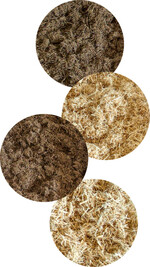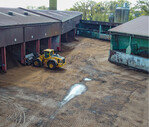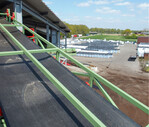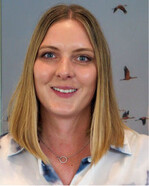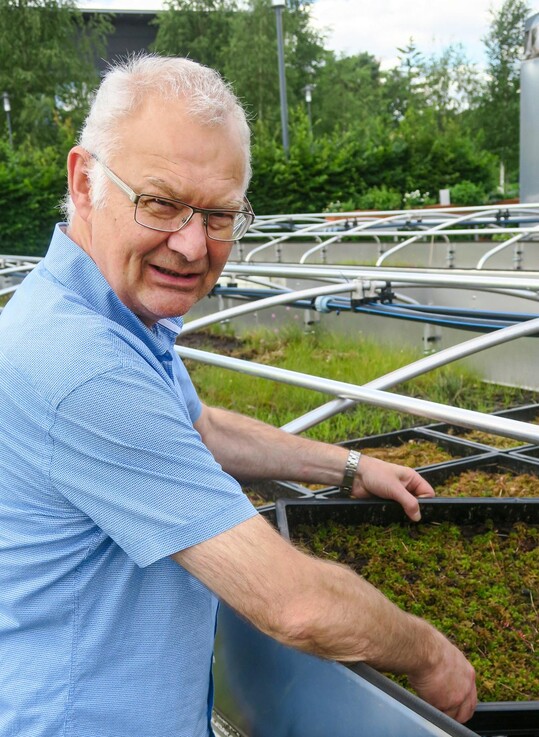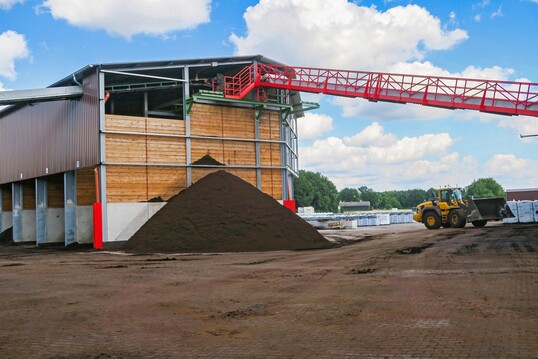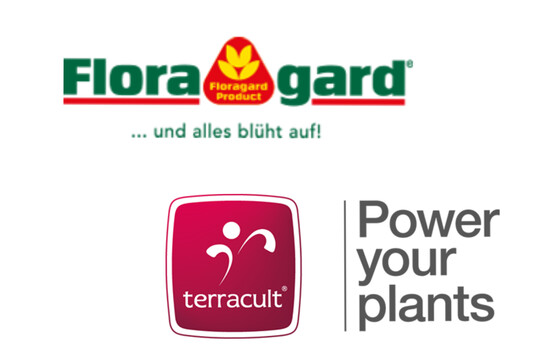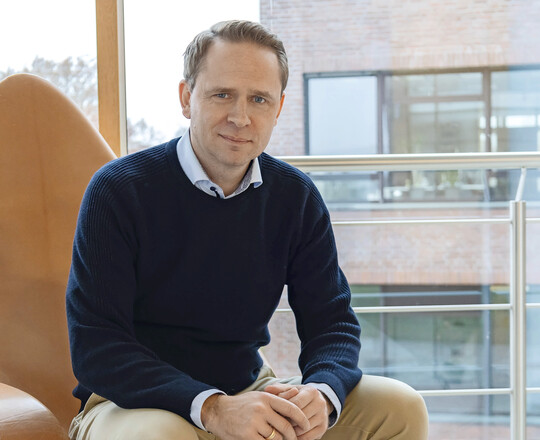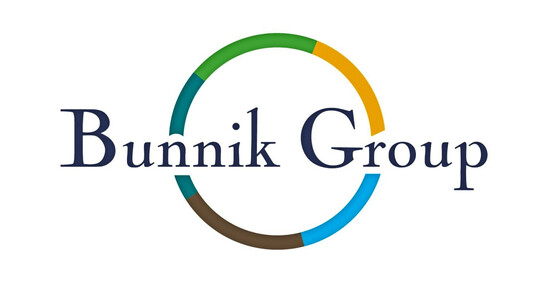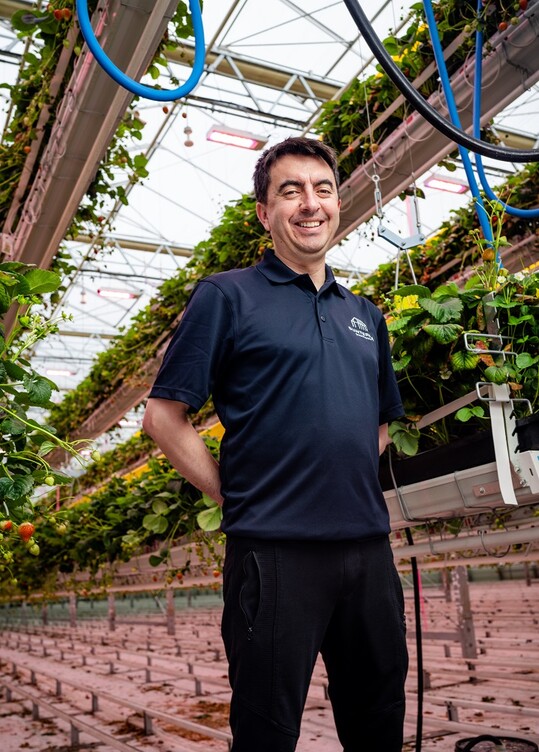The raw materials are scarce and expensive
The run on renewable raw materials for substrate production has already begun and is set to intensify. "We haven't been talking about peat for a long time now, but about a potpourri of aggregates for substrate production," welcomed Ulrike Fockenberg, Sales Manager Germany, to a journalists' day at the Gramoflor company site in Vechta at the end of April 2022.
- Published on
The German Federal Ministry of Food and Agriculture (BMEL) is calling on the horticultural sector to significantly reduce peat use. From 2026, only peat-free potting soils may be used; from 2030, peat is to be largely replaced in professional soils. And from 2038, from today's perspective, peat will no longer be used at all for substrates and potting soils. Josef Gramann therefore spoke of a paradigm shift in the soil industry. The future, he said, lies in peat substitutes, all in the name of climate protection. He said that a round table with all stakeholders would be good, but would ultimately fail because all substrate producers are competitors at the same time. Every substrate producer is working on substrate alternatives. That is not enough; trade and consumers must also be brought on board.
Gramann praised the many reports on the subject of peat alternatives, also in trade journals, which are contributing bit by bit to a rethinking on the part of producers.
Peat demand is still there
Despite all efforts to replace peat, Gramoflor still buys larger quantities of Baltic peat because the demand is there. Peat use is very efficient: with modern cultivation systems, commercial growers produce up to 350,000 seedlings from just one cubic meter of growing medium. The production of vegetable seedlings plays a central role in this.
One problem for the substrate industry is the availability of sufficient alternative raw materials of good and consistent quality. Due to the currently very uncertain raw material situation, according to the Industrieverband Garten (IVG), no further forecast on a further peat reduction can be made with a statement from March 2022. Only recently, the IVG announced that the self-imposed targets for 2025, the use of 20% peat substitutes for professional soils and 50% peat substitutes for hobby soils, have already been achieved. In contrast, the Central Horticultural Association (ZVG) and VDG have set very ambitious targets for 2025 of 50% peat substitutes for professional soils and 70% peat substitutes for hobby soils.
Competition between substrate companies is creating movement, Gramann said. He assessed the peat reduction targets published by the ZVG as very ambitious. In his opinion, it would have been good to have a consensus between the individual associations such as ZVG, IVG and the Association of German Garden Centers (VDG) in the sense of an orderly peat reduction strategy that could be communicated well to the outside world.
Hurdles in production
What the public usually does not notice are the many hurdles that substrate companies have to get around on the way to peat substitutes. "Often, great, sustainable projects fail because of necessary approvals," Gramann spoke from experience, saying he himself often waits an extremely long time for answers from ministries, for example. For example, it can take several application years to obtain approval for a composting plant.
The company site in Vechta is traditionally located on a privileged site near the moor. The modern production site, in which a lot has been invested during the last years, loses this privilege if more than 50 % peat substitutes are used.
The production of wood fiber is based on a thermophysical process to mechanically defiber the wood at high temperatures. These high temperatures lead to the degradation of tannins and unwanted resins. According to regulations, wood fiber cannot be used for substrates if it has been heated above 100 °C. "So we have to be careful to stay below 100 °C during preparation," Gramann described another stumbling block.
Raw materials and fertilizers are in short supply
Challenges are the availability of materials. There have already been phases in which certain fertilizers were not available. So far, these phases have been well managed through consultation with customers and the use of alternative fertilizers.
The cost increases are considerable. Low-cost Cocopeat Type 30 saw a 77% price increase from January 2021 to April 2022, while wood chips increased by as much as 140%. NPK fertilizers increased in price by 88% and nitrogen fertilizers by 107% in the same period. Further price increases are to be expected.
Added to this are further increases in the cost of packaging materials and transport. Films for packaging professional substrates increased in price by 80% from the beginning of 2021 to April 2022. Transports are often already limited due to a lack of truck drivers.
This contrasts with rising global demand for substrates, which is expected to more than quadruple by 2050. The limited availability of peat and peat substitutes will limit this trend. "In the future, we will always be residual recyclers and reusers," says Gramann's view of the future.
The three-pillar path
The share of peat substitutes will always be a mixed calculation between the different operations and production sites, explained Ulrike Fockenberg. Finally, it is also important to keep an eye on specialized operations such as young plant companies. After all, all customers need a substrate that works.
It should be borne in mind that compost is not necessarily CO 2 neutral either. Methane, nitrous oxide and CO 2 can escape during composting. "The goal must be to produce electricity and heat from it," Gramann said, looking to the future.
In the future, it's always about combinations
"We must not only think in terms of raw materials, but also in terms of structural stability and water holding capacity," Fockenberg explained. Structural stability has long been the argument for sod peat. This property can now also be reproduced by wood fibers. What several white peat fractions used to do, various wood fibers can now take over.
The substrate of the future, he says, will always be a combination of different aggregates that also takes stability and water-holding capacity into account. Fockenberg estimates that about 50% wood fiber or wood fiber blends are possible in substrates.
The question of cost remains. Wood fiber is less expensive than white or black peat, the good news says. Compost is also somewhat cheaper, but the higher freight costs due to the higher weight make up for the price advantage.
Rice husks grown in Spain
According to Gramoflor, coco as a substrate raw material is much better than its reputation (see also interview on page 40). "Without coco, we would probably fall well short of the targets we have set," says Fockenberg. Currently, he says, there is no comparable raw material for the substrate industry in corresponding quantities. The processed coco pulp is "a residual material of residual materials, which is also transported in a highly compressed form," Gramann emphasized. A shipping container holds about 70 m³ of pressed coco. Adding water after transport results in seven to eight times that amount. This makes transport interesting again.
Since mid-March 2021, the company has been producing substrate additives from rice husks. Anyone who now thinks that this is not sustainable due to long transport routes of rice husks from Asia is mistaken. The Gramoflor Ibérica production plant in Spain, which opened in March 2021, is located only about 60 km from a major Spanish rice-growing area.
Gramoflor refines the rice husks produced in Valencian rice cultivation into a high-quality and unique raw material using a specially developed processing method with the addition of additional components.
Tests have shown that spelt husks are not suitable because their organic activity lasts too long.



